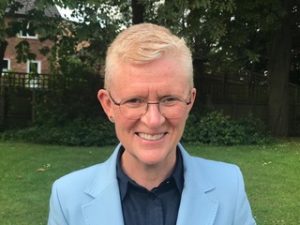
 Written by Bethan Roberts. Bethan is a Mindfulness Network Trainer and Associate Teacher at Bangor University’s Centre for Mindfulness Research and Practice (CMRP).
Written by Bethan Roberts. Bethan is a Mindfulness Network Trainer and Associate Teacher at Bangor University’s Centre for Mindfulness Research and Practice (CMRP).
In 2008, when I first set out on my mindfulness teacher training journey, there was no mention of Trauma Sensitive Mindfulness (TSM). I was learning the craft of teaching and was acutely aware of the lack of diversity in our field. I was also interested in exploring the potential role of mindfulness in reducing societal inequalities and in healing the harm that such inequalities cause to our minds and hearts, of which I had some personal experience. Several years later, the concept of TSM started to gather traction within our field. I learnt much from the beautiful trainings of David Treleaven[1], and could see the deep convergence between his approach and the work on equality, diversity and inclusion that we were engaged with at the Mindfulness Centre at Bangor University and the Mindfulness Network.
The Evolution of Trauma Sensitive Mindfulness
As we know, experiences of exclusion, discrimination and harassment can cause trauma. A special issue of the Journal of Traumatic Stress highlighted the impact of discrimination on a whole range of marginalised groups and found that ‘Globally, individuals and communities that are marginalized based on their identities are at heightened risk for exposure to traumatic stress…’ (Allwood et al, 2021)[2]. The evolution of mindfulness training and teaching to incorporate TSM has deeply enriched this work on equality, diversity and inclusion within mindfulness in myriad ways. Not only has it made the teachings more accessible and inclusive to marginalised groups, but I believe it enhances the skilfulness within our mindfulness practice which can enable all of us, whatever our background and history, to develop greater trust in our own capacity to wisely meet whatever is arising in experience.
From the start there was always a degree of trauma sensitivity built into the guided practices. If you go back to the early recorded guided practices of Jon Kabat Zinn and other prominent teachers in the 90s and noughties, there were always choices given. For example, if bodily sensations were too intense, the invitation was to soften around them, to breathe into and out of them, and/or to move the body with awareness. Then as growing attention was given to the importance of weaving in trauma sensitivity, the guidance became more refined, detailed and choiceful, further building our capacity for wakeful, sensitive care and discovery within our practice.
Integrating TSM into Practice: My Personal Experience
I personally found this trauma sensitive approach incredibly helpful in 2020 after I sustained four vertebral crush fractures in March of that year in the wake of contracting the first covid variant. (It was later discovered that I have osteoporosis which is a disease that weakens the bones). The fractures and the consequent change to my spine together with a sudden and significant loss of height, left me with chronic sensations that fluctuated on a scale from discomfort to higher volume pain. And although this experience would not constitute traumatic stress as such, putting into practice what I had learnt about TSM from David Treleaven, and teachers from Brown University’s Center for Mindfulness, principally Éowyn Ahlstrom and Lynn Koerbel, I discovered that I was better able to hold these intense and unpleasant bodily sensations with greater kindness, patience and care, as well the challenging emotional and psychological experiences that came in the wake of being in a much changed body. I strongly believe my mindful movement practice, which incorporates trauma sensitivity, has helped me with my ongoing physical recovery and in the management of my spine.
As for the longstanding emotional and psychological wounds of the past (and present) that I and so many of us carry from years of discrimination, exclusion and harassment, and for those who have survived other kinds of trauma, including inter-generational trauma, these skills and the atmosphere of kindness we cultivate through working with ‘lighter weight’ difficulties in our practice can gradually be invited into the tender and transformative work of deeper, inner healing. Words are powerful; words can harm, and words can heal, and our choice of words in guiding practices can open doors for greater connection and engagement.
Because I felt passionate about sharing what I had learnt on this journey, I set about to re-record all my guided Mindfulness- Based Stress Reduction (MBSR) practices in 2023 namely: the three 45-minute practices of the body scan, ‘sitting’ practice (shorthand for stillness practice) and mindful movement, a 20-minute Attentional Focus practice and the short STOP practice. These are all freely available on this page: Mindfulness Audio Downloads (bangor.ac.uk)
My revised guidance includes a much greater emphasis on choices at every stage of the practice. I am sure you are all aware that almost all mindfulness teachers now give choices of ‘anchors’ for the attention at the start of guided practices, which is an example of how TSM has become mainstream. I’ve also incorporated into the guidance suggestions about a variety of ways to work with difficulties when they arise (and there is no need to go looking for difficulties) including: –
- deliberately shifting the attention to a place that is not experiencing pain or discomfort such as a reliable, trusted ‘anchor’ in the body or sounds, whilst the difficulty fades into in the background, or is known in the periphery of awareness;
- holding the experience in a more spacious field such as whole body awareness;
- steering the attention away from the body to sounds (or if the difficulty resides in the soundscape, moving to a body awareness);
- offering options for sensitively moving the attention closer to, or away from, the difficulty with care and kindliness; and
- if the experience feels overwhelming, shifting to an eyes wide open practice, pausing the practice, or stopping the practice altogether.
Example: Bethan Roberts: Sitting Practice (incorporating trauma sensitivity)
The way I guide mindful movement has also changed significantly to incorporate trauma sensitivity, thanks to the wonderful trainings of Éowyn Ahlstrom, and now there is a: –
- choice of rhythmic movements as well as holding positions;
- demonstration of different options whilst guiding practices;
- use of language that clearly conveys the direction of movement;
- reminder that participants are ‘in charge’ of their own bodies in the sense that they are completely free to choose what feels appropriate for their own bodies at any given moment; and
- full permission to do more or less than the guidance invites – making it their own practice.
This is in addition to the usual options of imagining doing the movements and taking care not to go beyond limits, which have always been a staple of mindful movement guidance.
Example: Bethan Roberts: Lying Down Yoga (incorporating trauma sensitivity)
Introducing a guided short STOP practice for the first time on the Bangor University website also felt an important addition. The doorway into the practice is a connection to a safe and reliable ‘anchor’ (the ‘T’ of taking a breath is effectively shorthand for this), which offers another option for a foundational practice compared to the three-step-breathing space. I believe that initial connection to an ‘anchor’ before the ‘O’ of opening to / observing wider experience makes the support of an ‘anchor’ more easily available to come home to, should experience feel overwhelming.
Example: Bethan Roberts: STOP Practice
My exploration with this in my own practice continues. I am currently using the practice of deliberately shifting attention when a difficulty arises to a place of pleasant sensations (whether it’s a place in the body such as the palms of my hands or the air on my skin; sounds such as birdsong or the sound of the wind or the silence in between sounds; or an aspect of the emotional field that feels pleasant such as calmness or gentleness), and resourcing myself in the nourishment and immersion that the pleasant offers. This can really help to stop the natural contraction in my body/heart/mind in the face of difficulty so that there is more of an open, allowing and welcoming space for the difficulty to be in the landscape of present moment experience. Combining this with cultivating kindness and care in the heart-space through regular loving-kindness practice is a beautiful way of attending to experience.
Supporting Safer and Inclusive Spaces for All
As mindfulness teachers, we can never know all that each participant brings when we teach a mindfulness class, and they themselves may not know what they bring either. So by guiding with trauma sensitivity we can help to create some of the many conditions needed for a safer, more inclusive and welcoming space for people to start their own mindfulness journey and all the potential riches that lie therein.
Bethan Roberts
September 2024
[1] Treleaven, T. (2018) Trauma Sensitive Mindfulness: practices for safe and transformative healing, WW Norton and Co
[2] Allwood, M. A., Ford, J. D. and Levendosky, A. (2021) ‘Introduction to the Special Issue: Disproportionate trauma, stress, and adversities as a pathway to health disparities among disenfranchised groups globally.’ Journal of Traumatic Stress ;34(5):899-904





2 comments on “My Journey to Trauma Sensitive Mindfulness Practices”
Zoe
October 2, 2024 at 1:59 pmThank you Bethan, what an inspiring and clear encouragement for us all to be careful what words we use when guiding, and how to skill up for greater trauma sensitivity through our own practice and experiences.
Kalyana
November 8, 2024 at 11:24 amThank you, Bethan, for this lovely piece. I was lucky to be your student at Bangor University and not only benefit from your trauma sensitive recordings, but also your kindness and warmth around teaching. At a time when I was experiencing distress in practice, you encouraged me to listen exquisitely to my needs, treat myself with the utmost care and gentleness, and cultivate a sense of trust and safety in myself. This practice changed my relationship to myself and my body, one moment at a time. You trusted me to be in control of the depth and intensity of my practice, which allowed me to try on that sense of trust in myself. You were the embodiment of a trauma sensitive mindfulness teacher and I’m forever grateful. My teaching is suffused with your teaching. Thank you.